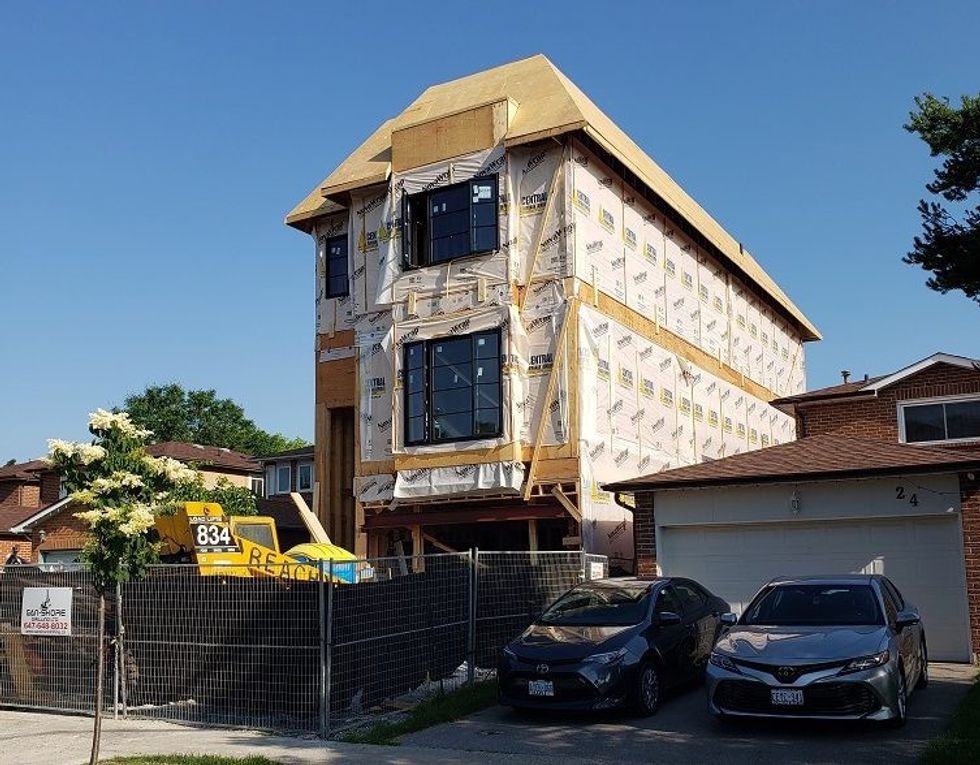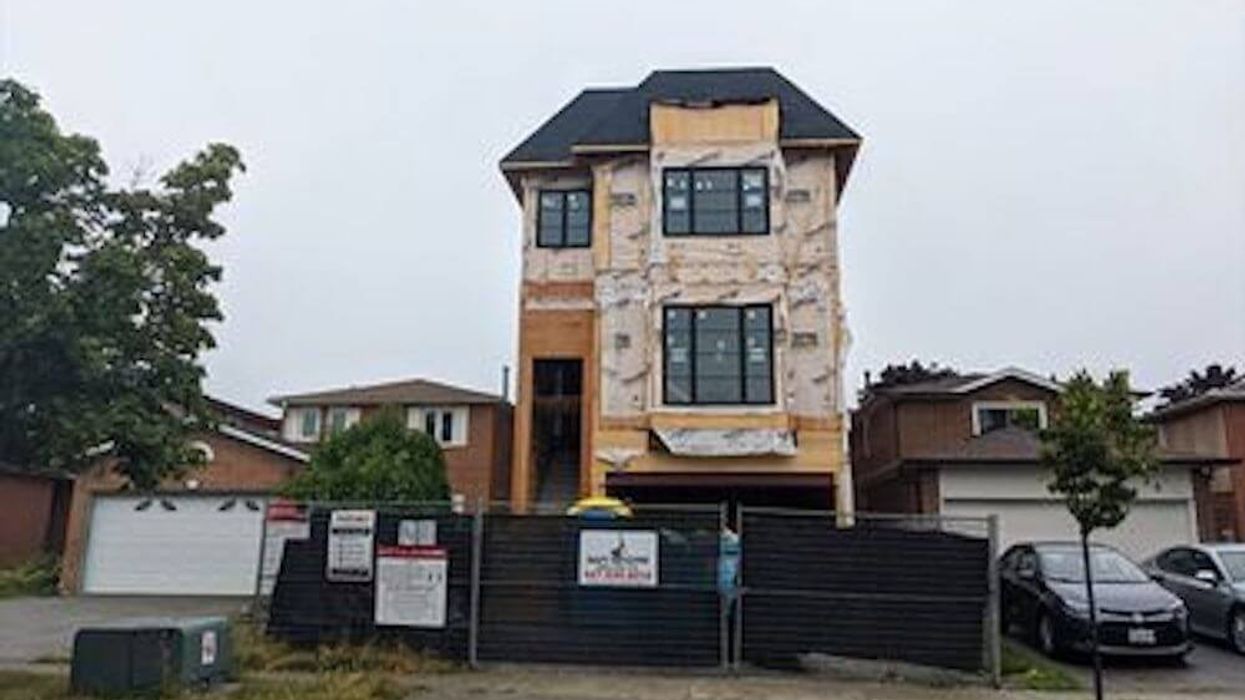A towering new home in Richmond Hill is raising eyebrows and highlighting shortcomings in existing zoning bylaws.
With its three storeys and sky-high ceilings, the home is nearly twice as tall as its neighbouring houses. In short, it sticks out like a sore suburban thumb in the quiet Don Head Village neighbourhood.
Is it obnoxious? Yeah, some may say so. However -- believe it or not -- the new home isn’t violating any local zoning rules and regulations. According to the plan, the single-family detached house is 10.97 metres tall; meaning, it sits within the maximum allowable height in the neighbourhood, which is 11 metres. Furthermore, the home covers 39.7% of the land, less than the maximum allowed 40 metres.
Despite being (barely) legal, neighbours and local residents aren’t impressed. Ward 5 Councillor Karen Cilevitz is one of them. She says some 20 other local residents have also vocalized their concerns, questioning how such an "eyesore" of a home was given the green light in the first place.
“The major issues are numerous, beginning with provincial and local planning principles, legislation, and bylaws,” Cilevitz tells STOREYS. “This particular build met all the maximum allowable zoning requirements, which meant the application did not require any official notification of the local residents; myself, as the local Councillor; nor an appearance before the Committee of Adjustment or Council. While this process may be ‘as of right,’ where it fails is considering the rights of the established neighbourhood and its residents/landowners, and they are just as important as the rights of the landowner, in this specific case, at 26 Lund.”

To start, those impacted by the monstrous move shouldn’t have been left in the dark.
“I believe that had there been at the very least some minimum consultation/engagement with myself and the close neighbours, we may have been able to avoid most of the angst surrounding this issue, both from the established residents and the infill landowner and builder,” says Cilevitz.
In fact, she describes the house as akin to building a lighthouse in the established neighbourhood without consulting the local residents. “The sheer size and height of this build is both jarring and shocking when compared to most of the established and surrounding neighbourhood, which caused the initial concerns from the residents and myself,” says Cilevitz.
“I believe there would have been a way to mitigate at least some of the negative backlash had some public consultation taken place, enabling both the residents and myself to feel more informed and/or engaged. It’s been my experience that most residents are far more understanding or receptive of any type of development within the boundaries of their neighbourhoods when they believe, and rightly so, that they have been respectfully consulted/engaged,” she continues.
Local neighbour Kathryn says the new monster home has become the talk of the neighbourhood. “The general consensus is that neighbours feel particularly sorry for the residents to the left and right of the new home,” says Kathryn. “It takes away their light, potentially impacts their privacy, and doesn’t fit into the surrounding neighbourhood. Not to mention, who would want to buy the homes next door should they come onto the market? It will likely impact their value.”
Cilevitz says she’ll work to ensure this type of situation doesn’t happen again in her ward.
“Infill development is a priority of mine as a local Councillor and finding best practices to ensure all involved believe they have been well-served by the planning and application processes is paramount to avoiding this type of situation happening again,” she says.
Of course, the larger systemic issue lays with the existing zoning laws.
Cilevitz says the situation highlights some of the embedded shortcomings of local zoning rules and regulations and that it must be addressed together with the larger aspect of planning as a whole. Currently, Richmond Hill is attempting to address these issues with the finalization of its revised Official Plan and the inception of its new Comprehensive Zoning By-Law (CZBL), which is currently undergoing extensive public and stakeholder consultations.
“My hope is that once we get all current, disparate, and outdated zoning parameters better defined under a city-wide umbrella CZBL policy, we will be able to better deal with most of the innate problems arising from infill development, which is a major concern for established residents,’ says Cilevitz. “Also of concern is the manner in which the entire process can lead to an eroding of an established neighbourhood’s intrinsic integrity if not undertaken with greater respect/concern for the entrenched existing residents. These are the issues with which we must appropriately deal on a go-forward basis as we tackle the finalizing of our long-awaited CZBL.”
As for the home’s owner, he declined to comment when contacted by STOREYS but asserts he did nothing wrong. And, in fairness, he technically didn't. At least, not legally. Socially, that's another story...





















